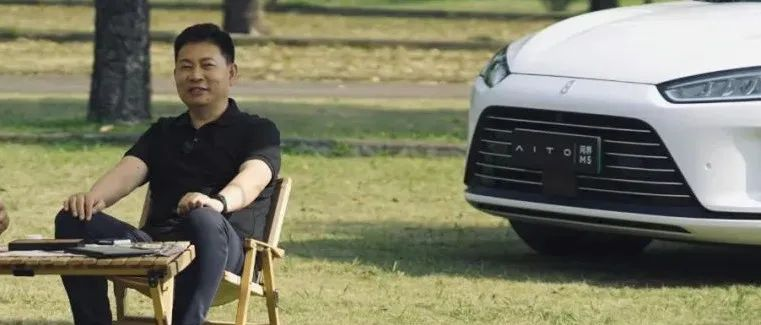Article by | Leng Zelin
Edited by | Wang Pan
The first appearance of the Wanjie M5 was at the Huawei Winter Product Launch last year, where it was the first car model to appear at a smartphone manufacturer launch. Huawei Terminal BG CEO and Intelligent Automotive Solution BU CEO, Yu Chengdong, spared no praise for the Wanjie M5, using words such as “millionaire luxury” to describe it.
They also set a target of “300,000” units sold in the first year, although they later changed their statement. However, this still shows Huawei’s emphasis on the Wanjie M5.
Recently, the Wanjie M5 announced its delivery figures for May, which reached 5006 units.
As of June 1, the cumulative delivery volume for this car model, which has been on the market for 87 days, has reached 11,296 units, setting a new record for the fastest delivery of a single new brand model to ten thousand units. In March and April, they delivered 3045 and 3245 units respectively.
Of course, this is at the expense of the old car owners of Sylphy vehicles, who feel “betrayed”, and the abandonment of their “right to have a say” by Wanjie M5.
With the growth in sales, the share price of Xiaokang Group in the secondary market has also increased. On June 10, Xiaokang Group hit the limit again, and its total market value approached 100 billion. According to Wind data, from April 27 to June 10 this year, the stock price of Xiaokang Group has risen by as much as 96.8%, ranking first in the comprehensive passenger car sector.
As a “hot fact,” on the same day, BYD’s market value surpassed one trillion yuan for the first time, with a similar increase of only about 50%.
Interestingly, this kind of plot is not new for the combination of Xiaokang and Huawei.
Last April, when Sylphy was launched under the Xiaokang Group’s subsidiary SciTech, Huawei’s Smart Selection collaboration led the stock price to rise all the way to a high of 83.83 yuan, and its market value surpassed 100 billion yuan.
Xiaokang has given up certain aspects of its reputation, but gained substance, while Huawei gained the reputation it wanted, and in the future, it could earn what it wants.
According to 36Kr’s report, Huawei Smart Selection cars have recently been widely deployed in the industry, having reached cooperation agreements with brands such as Chery, JAC, and ARCFOXxu.
People think that Yu Chengdong likes to talk a lot, but as long as it can be converted into sales and uses the label of Huawei cooperation, it will be the biggest winner.
Currently, Huawei has three cooperation models with car companies. The first is the supplier model, similar to the traditional Tier1, where the car company pays Huawei to provide parts such as AR-HUD, LiDAR and electric drive systems. For example, Salon Motors uses Huawei’s dual-MDC computing platform, but the software algorithm is provided by Momenta.
The second is the Huawei Full-Stack Intelligent Automotive Solution (HI model), primarily for providing autonomous driving systems. Due to the high investment required, the current partners are only GeometryAuto (Arcfox) of BAIC, Avita of Changan Motors, and Guangqi, and it will not expand in the short term.Normally speaking, traditional suppliers need to charge a certain amount of development or mold fees before receiving orders from automakers. However, Tan Benhong, chairman and CEO of Avita Technology, revealed last year that in this model, there is no buying and selling relationship and no fees are charged among the parties.
That being said, in the HI mode, Huawei has a certain degree of say in the car manufacturing process, but based on the comparison between the Arcfox Alpha S, the Seres SF5, and the Weltmeister M5, this influence is not very deep.
The third mode is the Huawei In-Vehicle Solution (HIS). Although it does not involve autonomous driving systems, from the existing cooperation models, Huawei plays a role from product definition, quality control, to marketing and sales. This is the deepest mode of cooperation with automakers compared to the other two.
Compared with the first mode, the HIS has a better “vision” than the traditional Tier 1 model. Compared with the HI mode, it requires less effort and technical difficulty and can achieve large-scale replication.
This also explains why Yu Chengdong always cheers for Weltmeister. As long as they sell well, Huawei will not worry about not having partners. After all, there are many automakers who want to transform into new energy but cannot find a “way out”.
At the same time, Huawei is also expanding its advantage with the release of the electric versions of the Weltmeister M7 and M5.
Previously, a Huawei dealer told Guoxin Travel that they could get a commission of nearly 20,000 yuan for selling a Seres SF5. In the current situation where the mobile phone business is gradually declining, selling cars has obviously become the best way to take on.
However, it is evident that there are certain limitations to the HIS mode at present. It can be seen that the partners under this mode do not have much achievements in the new energy field, and automakers with a certain strength and ideas are unlikely to be willing to become “OEMs”.
In this case, what Huawei needs is a brand that can form a long-term and stable sales volume, and currently, Weltmeister seems to be the best choice. But what is the position of cooperation with other brands and how to tilt the resources still requires a long period of adaptation and exploration.
This article is a translation by ChatGPT of a Chinese report from 42HOW. If you have any questions about it, please email bd@42how.com.
